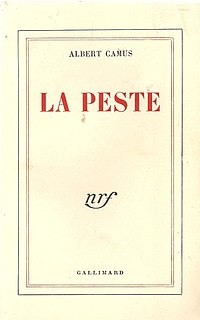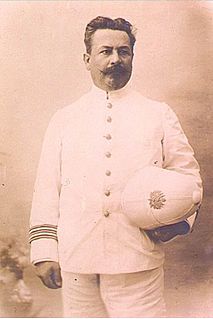 W
WPlague is an infectious disease caused by the bacterium Yersinia pestis. Symptoms include fever, weakness and headache. Usually this begins one to seven days after exposure. There are three forms of plague, each affecting a different part of the body and causing associated symptoms. Pneumonic plague infects the lungs, causing shortness of breath, coughing and chest pain; bubonic plague affects the lymph nodes, making them swell; and septicemic plague infects the blood and can cause tissues to turn black and die.
 W
WIn 1563, London experienced its worst episode of plague during the sixteenth century. At least 20,136 people in London and surrounding parishes were recorded to have died of plague during the outbreak. Around 24% of London's population ultimately perished, but the plague affected London's insanitary parishes and neighbourhoods the most.
 W
WThe 1924 Los Angeles pneumonic plague outbreak was an outbreak of the pneumonic plague in Los Angeles, California that began on September 28, 1924 and was declared fully contained on November 13, 1924. It represented the first time that the plague had emerged in Southern California; plague outbreaks previously surfaced in San Francisco and Oakland. The outbreak killed 30 people and infected several more. Public health officials credited the lessons learned from the San Francisco outbreak with saving lives, and swiftly implemented preventative measures, including hospitalization of the sick and all their contacts, a neighborhood quarantine, and a large-scale rat eradication program. The epicenter of the plague was in the Macy Street District, primarily home to Mexican immigrants. Racism against Mexican Americans tainted the reaction to the plague, an issue not made public until the outbreak concluded. This outbreak was the last instance of aerosol transmission of the plague and the last major plague outbreak in the United States.
 W
WBubonic plague is one of three types of plague caused by the plague bacterium. One to seven days after exposure to the bacteria, flu-like symptoms develop. These symptoms include fever, headaches, and vomiting, as well as swollen and painful lymph nodes occurring in the area closest to where the bacteria entered the skin. Occasionally, swollen lymph nodes, known as "buboes," may break open.
 W
WMadagascar has experienced several outbreaks of bubonic and pneumonic plague in the 21st century. In the outbreak beginning in 2014, 71 died; in 2017, 202 died. Smaller outbreaks occurred in January 2008, and December 2013.
 W
WPanic in the Streets is a 1950 American film noir directed by Elia Kazan. It was shot exclusively on location in New Orleans, Louisiana, and features numerous New Orleans citizens in speaking and non-speaking roles.
 W
WMarian columns are religious monuments depicting Virgin Mary on the top, often built in thanksgiving for the ending of a plague or for some other reason. The purpose of the Holy Trinity columns was usually simply to celebrate the church and the faith, though the plague motif could sometimes play its role in their erection as well. Erecting religious monuments in the form of a column surmounted by a figure or a Christian symbol was a gesture of public faith that flourished in the Catholic countries of Europe especially in the 17th and 18th centuries. Thus they became one of the most visible features of Baroque architecture. This usage also influenced some Eastern Orthodox Baroque architecture.
 W
WSeveral epidemics from the plague struck Malta from the medieval era until 1945, claiming almost 20,000 victims in at least ten epidemics over 350 years. After the first epidemics, preventive measures were installed, including a very active lazaret which issued patents of non-contagion for many ships plying the Mediterranean.
 W
WThe Plague is a novel by Albert Camus. Published in 1947, it tells the story from the point of view of a narrator of a plague sweeping the French Algerian city of Oran. The narrator remains unknown until the start of the last chapter, chapter 5 of part 5. The novel presents a snapshot of life in Oran as seen through the author's distinctive absurdist point of view.
 W
WPneumonic plague is a severe lung infection caused by the bacterium Yersinia pestis. Symptoms include fever, headache, shortness of breath, chest pain, and coughing. They typically start about three to seven days after exposure. It is one of three forms of plague, the other two being septicemic plague and bubonic plague.
 W
WThe Roman Plague of 590 was an epidemic of plague that affected the city of Rome in the year 590. Probably bubonic plague, it was part of the first plague pandemic that followed the great plague of Justinian, which began in the 540s and may have killed more than 100 million Europeans before spreading to other parts of the world and which lasted until the end of Late Antiquity. The plague was described by the bishop and chronicler Gregory of Tours and later chronicler Paul the Deacon.
 W
WSepticemic plague is one of the three main forms of plague. It is caused by Yersinia pestis, a gram-negative species of bacterium. Septicemic plague is a life-threatening infection of the blood, most commonly spread by bites from infected fleas.
 W
WPaul-Louis Simond was a French physician, chief medical officer and biologist whose major contribution to science was his demonstration that the intermediates in the transmission of bubonic plague from rats to humans are the fleas Xenopsylla cheopis that dwell on infected rats.
 W
WSylvatic plague is an infectious bacterial disease caused by the plague bacterium that primarily affects rodents, such as prairie dogs. It is the same bacterium that causes bubonic and pneumonic plague in humans. Sylvatic, or sylvan, means 'occurring in woodland,' and refers specifically to the form of plague in rural wildlife. Urban plague refers to the form in urban wildlife.
 W
WUrban plague is an infectious disease among rodent species that live in close association with humans in urban areas. It is caused by the bacterium Yersinia pestis which is the same bacterium that causes bubonic and pneumonic plague in humans. Plague was first introduced into the United States in 1900 by rat–infested steamships that had sailed from affected areas, mostly from Asia. Urban plague spread from urban rats to rural rodent species, especially among prairie dogs in the western United States.
 W
WPlague vaccine is a vaccine used against Yersinia pestis to prevent the plague. Inactivated bacterial vaccines have been used since 1890 but are less effective against the pneumonic plague, so live, attenuated vaccines and recombinant protein vaccines have been developed to prevent the disease.
 W
WAlexandre Emile Jean Yersin was a Swiss-French physician and bacteriologist. He is remembered as the co-discoverer of the bacillus responsible for the bubonic plague or pest, which was later named in his honour: Yersinia pestis. Another bacteriologist, the Japanese physician Kitasato Shibasaburō, is often credited with independently identifying the bacterium a few days earlier, but may have identified a different bacterium and not the pathogen-causing plague. Yersin also demonstrated for the first time that the same bacillus was present in the rodent as well as in the human disease, thus underlining the possible means of transmission.
 W
WYersinia pestis is a gram-negative, non-motile, coccobacillus bacterium without spores that is related to both Yersinia pseudotuberculosis and Yersinia enterocolitica. It is a facultative anaerobic organism that can infect humans via the Oriental rat flea. It causes the disease plague, which caused the First plague pandemic and the Black Death, the deadliest pandemic in recorded history. Plague takes three main forms: pneumonic, septicemic, and bubonic.